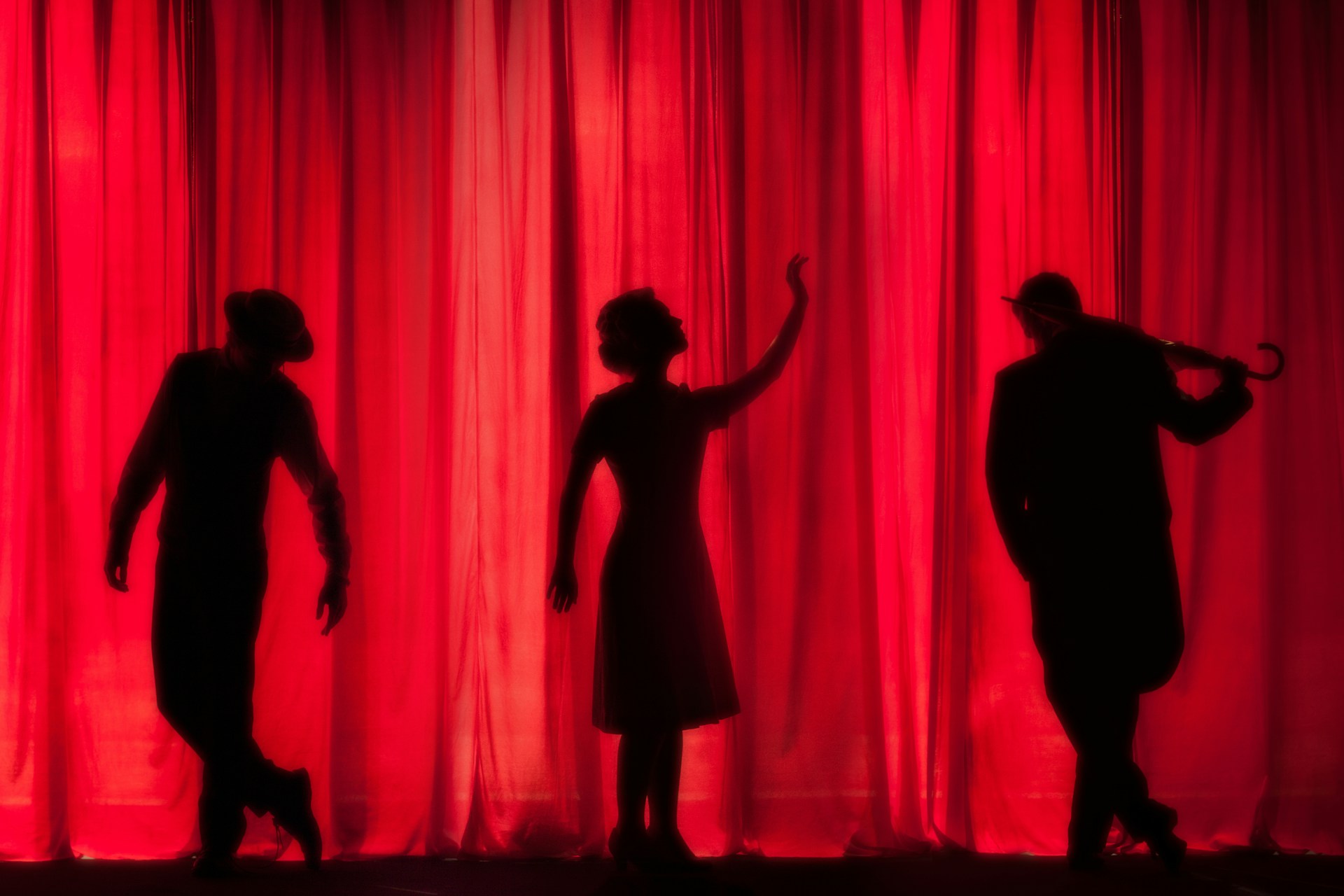Konstantin Stanislavski and Bertolt Brecht are practically household names for anyone that’s interested in acting or the dramatic arts. They revolutionised the world of acting and directing with groundbreaking techniques and theatrical innovations in the early 20th century, completely transforming modern theatre. They also still deeply influence stage and screen actors today.
Within our catalogue of creative online diplomas, we offer an Introduction to Acting and Performance Diploma that’s designed to examine the processes and techniques that are used by actors by putting the spotlight on masters like Stanislavski and Brecht. Whether you want to pursue acting or simply appreciate the performing arts, understanding these pioneering figures is a must, which is why we wanted to give you some insight into these leading figures through this blog!
Jump to:

Konstantin Stanislavski and his Techniques
In terms of their theatrical practices, Stanislavski and Brecht are polar opposites. Stanislavski was all about emphasising emotions and realism, whereas Brecht prioritised political issues and created a distinction between the play and the audience.
Konstantin Stanislavski was a famous Russian theatre practitioner in the late 19th and early 20th centuries. He developed his own systemic approach to training actors and directing plays, known as the “Stanislavski System” or “Method Acting”. At the time, very exaggerated acting and melodramatic acting styles were popular, but Stanislavski focused on creating more natural performances that were true to life. At the core of his techniques was his goal of helping actors to connect emotionally to their roles and bring inner motives to the surface. It was all about creating complete inner lives for characters and being immersed in their world as an actor.
Some of his techniques included:
- Emotional memory - He would have actors draw on personal experiences and emotions to connect with the role.
- Magic If - Actors were asked “what if” to imagine the character's circumstances and mindset.
- Action verbs - Actors would break scenes down into concrete actions to focus their performance.
- Given circumstances - Actors would spend time understanding the character’s background.
Lee Strasberg and Stella Adler were two American acting teachers who used Stanislavski's techniques. They trained A-list method actors like Marlon Brando, Robert Di Niro, Al Pacino, Dustin Hoffman and Meryl Streep.
Recommended for you!
Best SellersBertolt Brecht and His Techniques
Bertolt Brecht was a German playwright and director in the early 20th century. He developed a new approach to theatre that was called “Epic Theatre” or “Brechtian Theatre”. He believed that theatre was more than just entertainment and should provoke social and political change as well. Therefore, his approaches broke away from the realism and emotional manipulation of Stanislavski.
Some of Brecht’s key techniques include:
- Verfremdungseffekt (distancing/alienation effect) -This is essentially breaking the illusion of theatre to remind viewers that they’re watching a play.
- Historicisation - Brecht liked to write plays based on historical events so that he could draw parallels between history and current issues.
- Placards - Placards or signs were used to directly communicate information to the audience. For example, background information about a character or historical context about the scene.
- Music - Normally, songs in plays are meant to emotionally influence the audience and emphasise dramatic moments, but Brecht used songs as a way to interrupt the action instead, offering commentary and narration.
Some of Brecht's most famous Epic plays - including Mother Courage and Her Children and The Threepenny Opera - used his signature techniques effectively. They combined entertainment and commentary with an aim to provoke the audience intellectually, rather than simply entertain them.

Other Influential Figures in Modern Performance
While Stanislavski and Brecht stand out as masters in modern performance, they weren’t alone in advancing modern theatre. Other visionaries developed their own techniques, taking influence from (and also rejecting) techniques that were used by Stanislavski and Brecht.
Vsevolod Meyerhold was a Russian actor and director who was trained in Stanislavski’s techniques. However, Meyerhold developed “Biomechanics”, which used strict bodily control and machine-like precision: quite the opposite of Stanislavski’s naturalism.
Antonin Artaud was part of the French theatre scene. He founded the "Theater of Cruelty" movement which focused on visceral, ritualistic theatre that rejected realism and psychology. He used rather extreme methods like playing deafening music, disturbing images and primal gestures to assault the audience’s senses, rather than stirring emotions realistically.
Jerzy Grotowski was an experimental Polish director who pioneered "Poor Theatre" by stripping away props, sets and effects to focus purely on actor-audience interaction. He developed demanding training techniques that required actors to be physically and mentally vulnerable. These intimate performances couldn’t have been further from Brecht’s style of detachment.
Joan Littlewood was an English director who led the Theatre Workshop. She blended Stanislavski's psychological approaches with Brechtian political commentary and social issues. She pioneered improvisational techniques and also helped revolutionise musical theatre with productions like Oh, What a Lovely War! In 1969.
Stanislavski and Brecht’s techniques have become integral to actor training and performance, even to this day. Aspiring actors have a wealth of techniques and approaches to draw from thanks to masters like these. Those looking to learn more about the craft of acting and embodying characters on stage or screen can gain key foundational knowledge through our accredited Introduction to Acting and Performance Diploma, available for only £29 (save £98)! This comprehensive online course outlines the steps to begin an acting career and provides a solid base of knowledge in the processes and techniques that are employed by actors.













